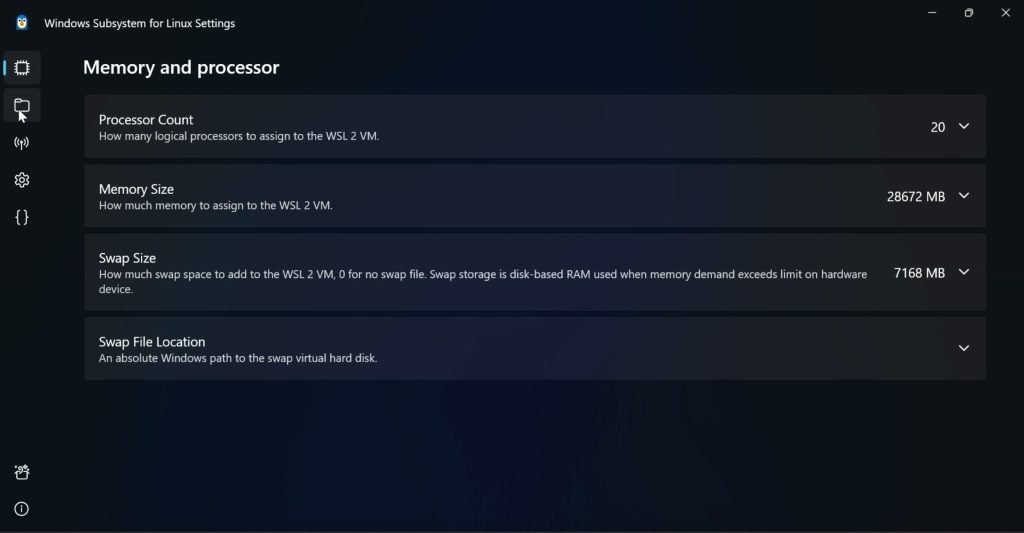Microsoft has announced the development of a graphical configurator for WSL, a layer for running Linux applications on Windows, to simplify configuration and management of WSL parameters.
Microsoft has announced that it is developing a graphical configurator for its Windows Subsystem for Linux (WSL), a layer that allows users to run Linux applications on Windows. The new configurator aims to simplify the configuration of WSL to meet users’ needs and provide a more user-friendly way to manage and view various WSL parameters.
Currently, configuring WSL requires manually editing the .wslconfig file, which can be difficult for some users to understand. The new configurator will present all possible settings, grouped into categories and equipped with an indicator of the acceptability of using a particular parameter in the current system. The ability to configure through the .wslconfig file will still be preserved, allowing users to use both the GUI and the text configuration file simultaneously.
In addition to the new configurator, Microsoft has also announced some changes to WSL itself. Some settings that were previously classified as experimental will now be included by default, including autoMemoryReclaim=dropCache for automatically returning freed memory back to Windows and dnsTunneling=true for DNS tunneling in Windows 11.
Microsoft has also added some experimental features to WSL. These include the option wsl --manage --set-sparse to automatically return freed disk space to the main system and the parameter “networkingMode=mirrored” to enable the network mirroring mode required to support IPv6.
Another significant update is the addition of a plugin for WSL in Microsoft Defender, allowing users to monitor WSL environments using Microsoft Defender for Endpoint. Additionally, integration into the WSL agent is provided, allowing users to manage settings through Intune. In the future, Microsoft plans to add the ability to use the Dev Home configurator to manage and launch WSL environments.
Overall, these updates will help end users who use WSL for their workflow, including an additional layer of security using Defender.
All these updates are available via normal OS update.
Via blogs
Recent articles from DebugPoint.com
- How to Upgrade to Debian 13 from Debian 12on August 17, 2025
- How to Connect to Fedora or Ubuntu Linux from macOSon August 12, 2025
- Debian 13 “Trixie”: Best New Featureson August 10, 2025
- Fedora 42: Best New Featureson April 24, 2025
- GNOME 48: Best New Featureson April 23, 2025
